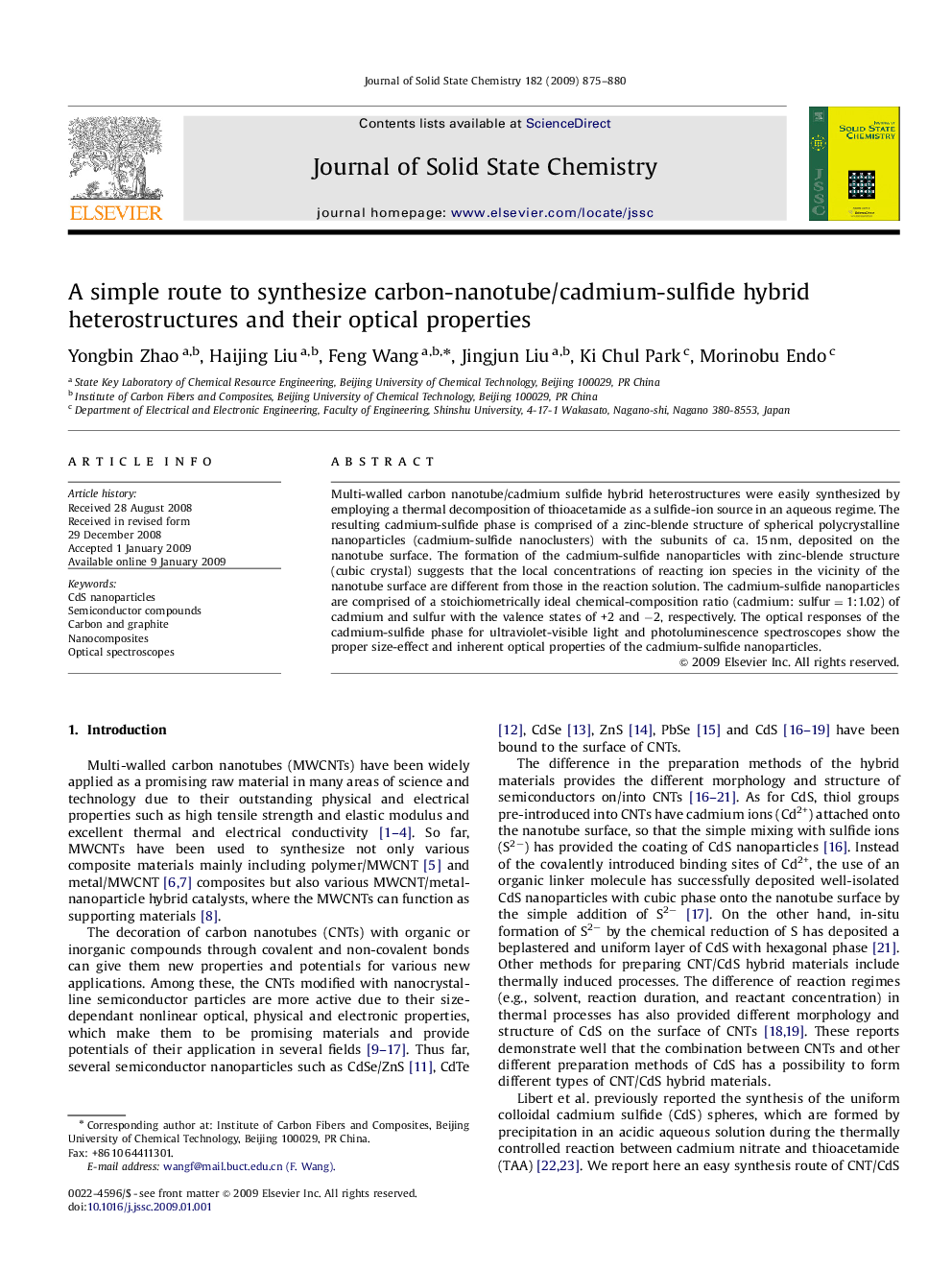| Article ID | Journal | Published Year | Pages | File Type |
|---|---|---|---|---|
| 1329370 | Journal of Solid State Chemistry | 2009 | 6 Pages |
Multi-walled carbon nanotube/cadmium sulfide hybrid heterostructures were easily synthesized by employing a thermal decomposition of thioacetamide as a sulfide-ion source in an aqueous regime. The resulting cadmium-sulfide phase is comprised of a zinc-blende structure of spherical polycrystalline nanoparticles (cadmium-sulfide nanoclusters) with the subunits of ca. 15 nm, deposited on the nanotube surface. The formation of the cadmium-sulfide nanoparticles with zinc-blende structure (cubic crystal) suggests that the local concentrations of reacting ion species in the vicinity of the nanotube surface are different from those in the reaction solution. The cadmium-sulfide nanoparticles are comprised of a stoichiometrically ideal chemical-composition ratio (cadmium: sulfur=1:1.02) of cadmium and sulfur with the valence states of +2 and −2, respectively. The optical responses of the cadmium-sulfide phase for ultraviolet-visible light and photoluminescence spectroscopes show the proper size-effect and inherent optical properties of the cadmium-sulfide nanoparticles.
Graphical abstractTransmission electron micrograph observation and electron diffraction pattern analysis of MWCNT/CdS heterostructures, which show that CdS nanoparticles with cubic CdS phase are deposited on the surface of MWCNTs.Figure optionsDownload full-size imageDownload as PowerPoint slide
